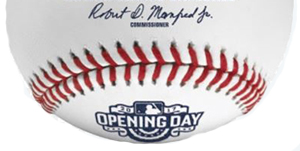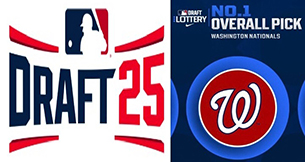
The comments from the previous TalkNats article contained an interesting discussion regarding whether MLB was broken. Looking forward to the next CBA, is a Cap/Floor needed? Here’s my 2cents: ABSOLUTELY POSITIVELY YES. MLB Trade Rumors did a poll on this subject with over 35,000 votes.
The issue is, how does MLB and the MLBPA get there? MLB likely wants a salary cap ceiling; the MLBPA does not. MLBPA likely wants a salary floor; MLB does not.
They need to compromise and implement both. If they are not hard caps; the penalties for violating the hard cap can’t be just financial. That is what the current approach is for the CBT; and it has failed. Financial penalties (losing revenue sharing or paying the difference between payroll and the minimum to perhaps the MLBPA pension fund) might work for teams that don’t meet the floor.
Being a data guy; I like to use data to see if it can provide some clues or hints as to what the floor and the cap should be. So just to get the conversation started, I downloaded the 2024 team payroll data from this USA Today article. Just to get the conversation started, this data works.
The image above is a plot of that data. The values are in $1,000,000. If you are using a device that displays hover text, click on the image at the top of the article and a new window will open and if you position your mouse over one of the diamond symbols, it will display both the name of the team and payroll value. A listing of the data for those on devices (i.e., most phones) that don’t do hover text is included below.
If MLB and MLBPA ever decide to negotiate this, they can get the accurate data needed. And as an aside to TalkNats readers, if someone has a better source, provide that in a comment and I can try to create a chart/plot like the one above for that data.
My take on the first cut at numbers to use was the interquartile range, i.e., the 25th and 75th percentiles. Note that there are horizontal lines for both of those as well as the median (the 50th percentile). Neither side of the CBA will like those numbers.
This is where looking at the data can be useful. What jumps out at me is that there are 6 different clusters or groups:
- The top 2 (Mets and Yankees)
- The next 8 (Dodgers, Phillies, Astros, Rangers, Blue Jays, Braves, Cubs, Giants)
- The next 4 (Cardinals, Red Sox, Angels, Padres)
- The next 7 (White Sox, Rockies, Diamondbacks, Mariners, Nationals, Twins, Royals)
- The next 8 (Reds, Brewers, Tigers, Rays, Marlins, Orioles, Guardians, Pirates)
- And the bottom of the list (Athletics)
These are distinguished IMHO by both a gap and a change in slope (noting that the Rockies and White Sox do flatten out the fourth group; and the Reds and Brewers flatten out the fifth group).
FWIW, a reasonable floor is perhaps the midpoint between the 25th and 50th percentile. The MLBPA should like that as it forces roughly a third of the teams to spend more on payroll. Likewise the cap should be somewhere close to what the Dodgers and Phillies were in 2024. MLB should like that as it does prevent that extreme jump between the top 2 and the next 9 teams. Both sides have something they like; and something they don’t.
Here is the list of the actual values used:
- Mets − $305,624,274
- Yankees − $303,322,047
- Dodgers − $249,823,654
- Phillies − $243,476,617
- Astros − $236,524,482
- Rangers − $223,355,753
- Blue Jays − $221,862,600
- Braves − $217,290,000
- Cubs − $213,020,500
- Giants − $211,044,828
- Cardinals − $179,553,567
- Red Sox − $176,458,748
- Angels − $172,993,096
- Padres − $161,937,554
- White Sox − $142,995,900
- Rockies − $142,571,000
- Diamondbacks − $140,825,700
- Mariners − $135,738,647
- Nationals − $126,862,600
- Twins − $124,077,590
- Royals − $115,257,261
- Reds − $106,441,547
- Brewers − $105,833,094
- Tigers − $103,834,833
- Rays − $101,023,112
- Marlins − $97,227,400
- Orioles − $94,520,400
- Guardians − $93,333,629
- Pirates − $85,760,000
- Athletics − $60,503,298
So let the debates begin.
UPDATE
In the comments @granitrocmonster provided a link to the 2025 Baseball Prospective Cots data. As mentioned in my reply to him, I have produced the comparable graphs for them. Two values were included. Once is labeled Year End and the other is CB. I can guess what they mean, but could not find a definitive description. Since this is 2025, I am guessing that these contain some projections (especially since the page header describes them as projections.
As for the graph above, if your device shows hover text, click on the images to see a version that shows the team name and payroll when your mouse hovers over the diamond.
My take on these two graphs is that they are somewhat similar to the one included above in that there are still clusters defined by gaps and the slopes. The clusters are similar, though not the same; the gaps are not quite as large; and the slope differences as a bit less -pronouced.
FWIW that suggests to me that once/if a decision is made to implement a cap and a floor, some combination of clustering and percentiles would be a good approach. And as @saomagnifico pointed out, tying them to QO value and indexing for inflation would be a good idea.
Additional Update
Cots graphs for 2025 have been added. So now you can see both 2024 and the projection for 2025,
2024 Year End Graph

2025 Year End Graph

2024 CB Graph

2025 CB Graph

Let the debate continue!









